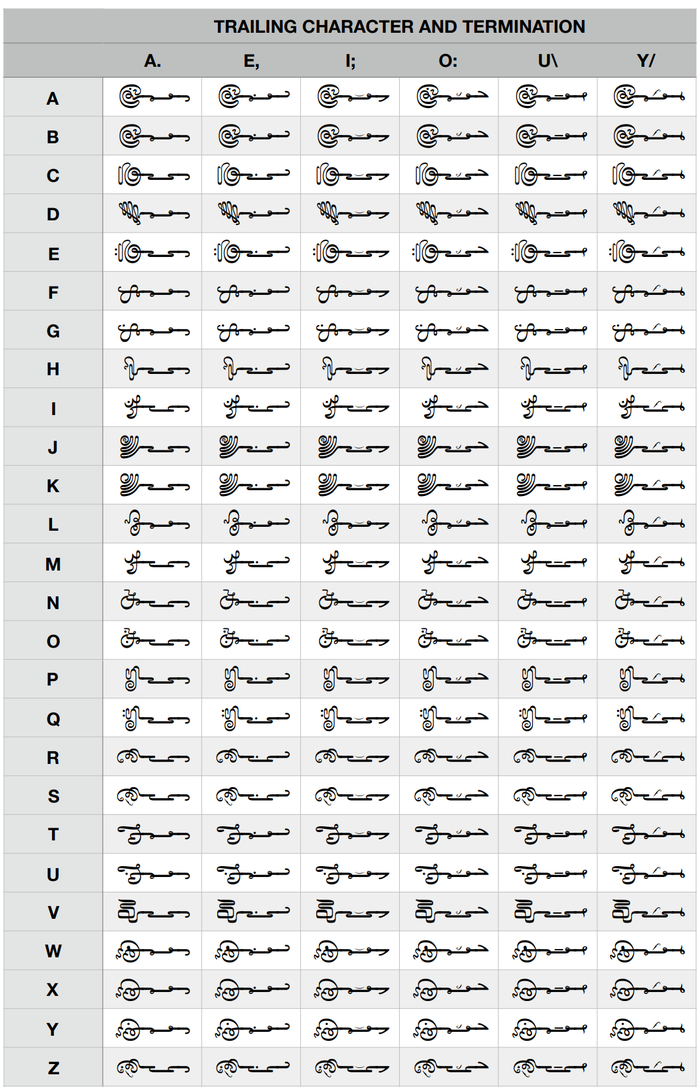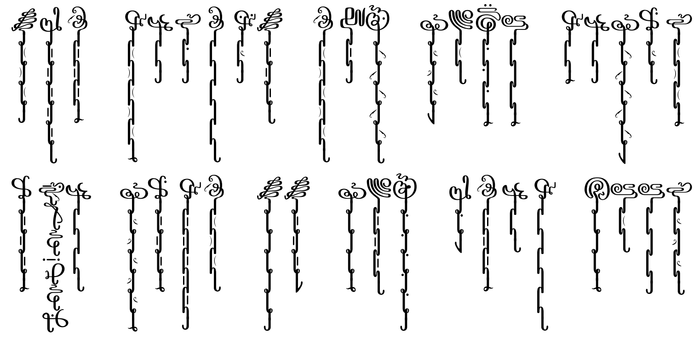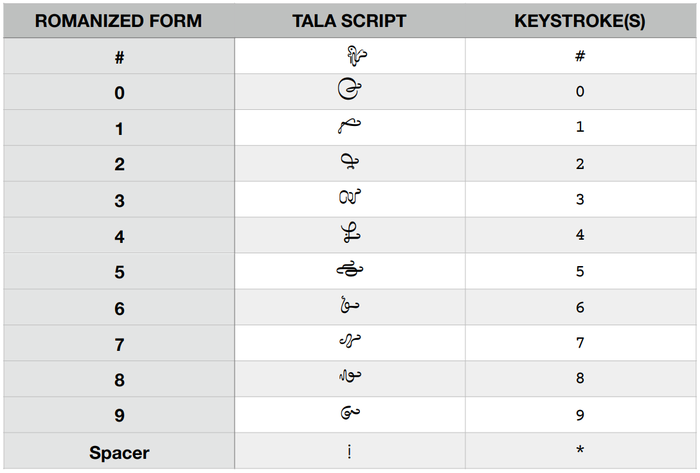Appendix:Tala orthography: Difference between revisions
m (Juelos moved page Appendix:Tala script to Appendix:Tala orthography) |
No edit summary |
||
| Line 1: | Line 1: | ||
'''Tala''' is | '''Tala''' is a {{wl|syllabary}} for the hypothetical language of the same name. The script was created by [[David J. Peterson]] and [[Claire Ng]] for the [[Netflix]] series ''[[Another Life]]''. | ||
==Tala script== | ==Tala script== | ||
Latest revision as of 23:54, 26 July 2024
Tala is a syllabary for the hypothetical language of the same name. The script was created by David J. Peterson and Claire Ng for the Netflix series Another Life.
Tala script
The Tala script serves as a syllabary designed to encode the distinctive cries of the bird-like Tala creatures. While the characters are mapped to Roman alphabet keystrokes, it is crucial to emphasize that these symbols do not represent how the cries sound. Instead, they encapsulate the following features of a cry:
- The cry can begin with various unique openings.
- It can vary in duration, being short, medium, or long.
- The quality of the cry can undergo modification in six different ways.
- It can conclude in one of six different manners.
The writing system is intended to be vertical, meaning that the direction of writing is from top to bottom and from right to left. This orientation is achieved by utilizing a font designed to type in the conventional left-to-right and top-down direction of the Roman alphabet. Each new cry is placed on a new line, and the resulting text is rotated 90 degrees clockwise.
In this system, an utterance comprises a sequence of cries, each placed vertically on its own space with spaces (return carriages) in between words. A longer phrase, for instance, might appear as follows:
The Tala script encompasses 26 initial characters, each corresponding to a letter from 'a' to 'z' on the keyboard. There are also 6 trailing characters ('a,' 'e,' 'i,' 'o,' 'u,' and 'y'), each of which can be typed two or three times consecutively, and 6 terminations (period, comma, semi-colon, colon, backslash, and forward slash). Each Tala word's syllable should comprise one and only one initial character, along with one to three trailing characters (with identical vowels), and one termination. A diverse array of combinations is encouraged to create an authentic script.
Below is a table illustrating all the initial characters, presented alongside each vowel and termination as examples. However, all possible combinations of trailing character and termination are possible:
It is important to note that any termination can be used with any trailing character, and trailing characters can be typed singly, doubly, or triply.
In extended blocks of text, successive lines should appear below the lowest termination, as exemplified below:
Numerals
In addition to these characters, the Tala script features unique forms for numbers, listed below along with the number sign and a spacer character:
Like in the tables above, the numerals as they appear in the preceding table should be rotated 90 degrees clockwise when used. To write a number, begin with the number sign. For instance, the number 219 appears as follows:
For lengthier numbers, the spacer can be inserted between numerals:



